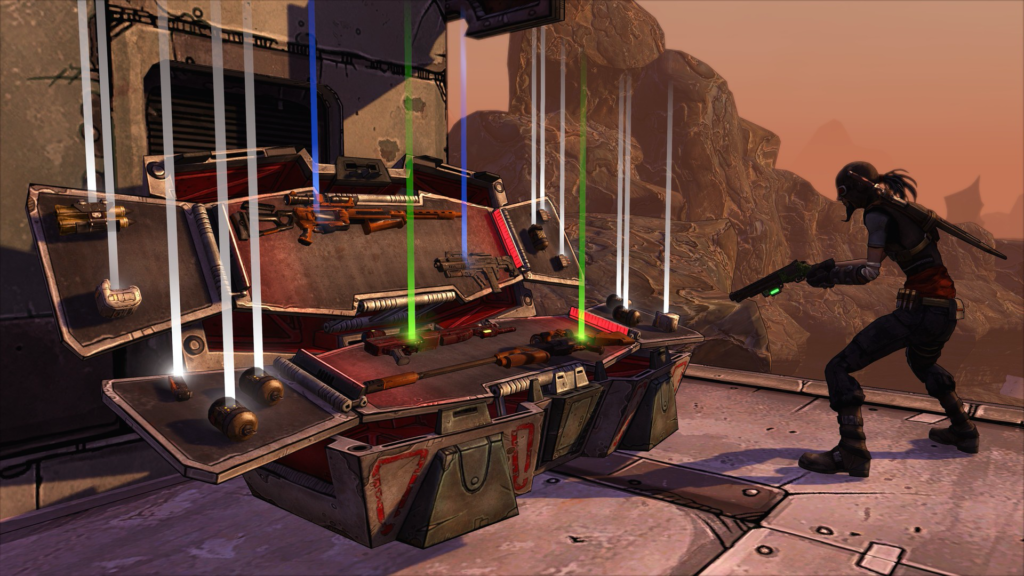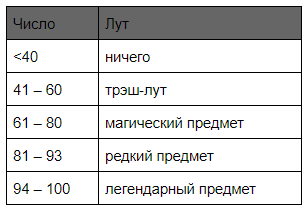What should be understood by loot in games, what functions are assigned to it and what types it is divided into,” says Owlcat Games game designer Yulia Chernenko.
The material is an edited version of Yulia’s speech at the online conference on game mechanics held by HSE Minecraft and the heads of educational programs on the gaming industry of the HSE (it’s about the programs “Game Project Management” and “Fundamentals of Game Creation“).
Yulia Chernenko
What is loot?
In this discussion, I propose to understand by loot all the items in the game that the player can get at his disposal. In other words, we are not talking exclusively about those items that fall from monsters or are given for completing quests.
Why? In practice, when balancing loot, it is often necessary to take into account, among other things, those items that, for example, can be found at merchants.
It is difficult to work in the format of “OK, now we are balancing items only from quests. And now only items from monsters, etc.”. To balance the entire system, it is important to understand which items the player will receive in the context of the entire game.
Loot functions
Loot functions depend heavily on the type of game. Let’s take for example classic adventure games (yes, they also have loot), survivalists with construction mechanics, “bagels” and role-playing projects.
- in adventure games, loot is a tool for solving riddles
The player has loot, which he gets on the cards or in certain zones. This loot often goes directly to the inventory.
In such games, loot is a tool for solving puzzles, and this is where its function ends. Often, items that have been found and used disappear so as not to confuse the player.
- in survivalists with construction mechanics, loot is either an ingredient or a means of processing
In such games, loot is both a resource and a means of processing/extracting resources.
For example, we can take an axe (a processing tool), approach a tree and start chopping it. So we will get the wood – ingredient.
- in bagels, the loot function is to add variety to the walkthroughs
The high randomness of dropping items in such projects, along with the generation of random events, makes each passage unique.
- loot in games with role-playing elements also adds variability, but at the same time it is often a reflection of progress
Without a good loot, a player, as a rule, cannot advance further in the game. Therefore, often in games with role-playing elements, an important role is played not only by pumping characteristics, but also by searching for items that simplify and diversify the passage.
In fact, the loot has much more functions. Even within the mentioned niches. Among the central ones is ensuring the operation of the game cycle
But I want to emphasize that loot always gives emotions. This is one of its most significant functions.
Emotions and loot
Loot always gives emotions. As a rule, they are positive (but not always, more on that below). To understand this, it is enough to turn to deconstruction, analyze what the game would be without loot and what it gets when it appears in the game.
I usually follow this scenario: I imagine a game without loot and answer questions:
- how has the pace of the game changed?
- what are the remaining features in the game?
- how much will change in the game if loot is returned to it again?
Let’s now try to deconstruct two games according to this scenario (in the first approximation, without going into details).
Borderlands
So, let’s try to imagine a game that can be called the progenitor of loot shooters, without loot (let’s assume that only a few guns were left in the game).
1) How has the pace of the game changed?
Most likely, it has decreased significantly, slowing down along with the player’s progress.
2) What are the remaining features in the game?
In case of exclusion of loot from the game, the following options will remain:
- level up;
- upgrade classes;
- choose a branch of development in one of the classes (that is, there will be a small variation in gameplay);
- there remains a variety of enemies and locations.
3) How much will change in the game if loot is returned to it again?
In addition to the fact that the previous pace and speed of progress will return, the following will catch your eye:
a) an increase in the number of awards with progress
At the beginning of the game, the player gets a new level about every half hour. In the presence of loot, the player also regularly receives new uniforms. Moreover, when the balance is laid, so that every 15-20 minutes the player receives some more valuable item, which will not just be in the inventory, but will move into equipment.
b) the growth of visual diversity
More visually diverse loot — more interest in the game and the joy of finding and finding it.
c) the appearance of greater variability in gameplay and pumping in the game
As a rule, variation is easiest to implement by working on the type and strength of damage. Players form a set of weapons, both based on their preferred type of game and on the combat situation on the map. These two variables, together with a wide selection of firearms, have a positive effect on the number of possible game scenarios, and hence on the variability of gameplay in general.
d) the emergence of situations related to unique content
Some items in the game are not generated, but are made “manually” for certain places and situations. These items may be useless from the point of view of mechanics, but they are assigned a story or a joke that entertains the player.
***
The main difficulty of working on loot, or rather, on the emotion that it gives in such games, is balance. If you work poorly with it, there is a risk to worsen the impression of the game. For example, a player likes melee weapons, but he always gets a ranged weapon.
Pathfinder
Now let’s take up the domestic role-playing game. It’s easier to imagine her without loot, but she definitely loses a significant part of her charm when you don’t need to dress up the team and dig for hours in the inventory.
1) How has the pace of the game changed?
If we remove all the loot from Pathfinder, then the pace of the game will not change much. Loot does not affect the dynamics of the game much.
2) What are the remaining features in the game?
Many things are in their places:
- game classes with their own different abilities;
- the magic system;
- plot;
- monsters.
But here’s what’s important to consider: some of the game features will be severely curtailed. Pathfinder is based on a board game and some of the feats (feat is the name of the qualities in the game that fine–tune the character) will not function, so the difference between classes and builds will blur. Players will not have scrolls and vandes, which will reduce some builds and the flexibility of casters.
3) How much will change in the game if loot is returned to it again?
Firstly, features that do not matter without loot will work again with it.
Secondly, the developer and the player will be able to differentiate builds much more.
Thirdly, unlike magic systems and game classes, in which the player knows in advance in most cases what awaits him, loot allows you to add an element of exploration in the first and even in the second passage.
***
As in the case of Borderlands, it is also important not to mess up the balance here. Suppose the user plays as a warrior, and the build itself develops with an emphasis on a long sword. If within 1-2 hours he gets everything in a row, except for the coveted sword, the game will not create good emotions.
***
Let’s summarize the interim results
First. When you understand how the game looks without loot, it becomes clearer how loot affects gameplay. This makes it easier to understand what potential emotions he can create.
Second. Emotions can be far from only positive. In case of a bad balance of the issue, the player, instead of good emotions, will get disappointed, will be frustrated by the project.
How to create the right emotions with loot?
It’s a matter of his control and balance. To work with them correctly, it is important to understand what types of loot distribution there are.
Types of loot
I usually distinguish four types of loot (or, more correctly, the type of loot distribution, since the type of loot can also be understood as what kind of content we are talking about, for example, weapons, uniforms, something else).
- Fixed Loot
A fixed loot is one that does not change its characteristics and its location on the zone or level. No matter how many times the player goes through the game, he will always find the same item in the same place.
In this case, each item is created manually and then manually placed in each location/monster/quest/merchant. This is a big and difficult job. But everything within the framework of working with such loot is under control.
A similar approach is used in many games, including Pathfinder.
- Randomized loot
Randomized loot is the type of created content whose output is determined by the algorithms embedded in the game.
As a rule, for games with this type of loot, items with certain characteristics are created, then they are distributed according to tables tied to certain places and monsters.
For example, a player kills a monster, then the game randomly selects a number from 1 to 100 and gives out a reward according to the table:
This is essentially a table of the probabilities of dropping items that you have already thought up and done in advance.
- Procedurally generated loot
A procedurally generated loot is the evolution of a randomized loot. Only now algorithms are responsible not only for the place and quality of the object, but also for its creation.
The process itself in this case is much more complicated, it now involves not one table tied to a specific place or monster, but a whole group that determines the type of loot, its characteristics, and somehow other qualities.
- A mix of the above
A common loot system. Allows you to choose a suitable content distribution model depending on the game mode or the type of location.
***
Each of the types of loot distribution helps to build and control the balance, constantly answers ordinary questions in the spirit of:
- how to motivate the user to continue playing at a difficult stage?
- where to drain the excess accumulated currency?
- at what point should I get rid of most of the consumables?
- and many others.
Conclusion
We briefly touched on the functions of loot, tried to figure out why one of the central ones is the creation of emotions, and also talked a little about the types of loot.
I will be glad to respond to comments under the material both on the website and on social networks.
Just below are links to useful materials on working with loot:
- Game Design Discussion | Loot Generation and Design
- Replayability in Game Design – Josh Bycer
- Fine-tuning The «Loot» Game Experience – Alex Cicala
- Loot drop best practices – Daniel Cook
- Defining Loot Tables in ARPG Game Design – Josh Bycer
- Loot system – WoWWiki
- How can I design loot to be enjoyable to acquire and neither a chore nor frustrating?
- How would you design an MMO loot rarity system?
- Defining Loot Tables in ARPG Game Design – Josh Bycer
Is there any news? Share it with us, write to press@app2top.ru






